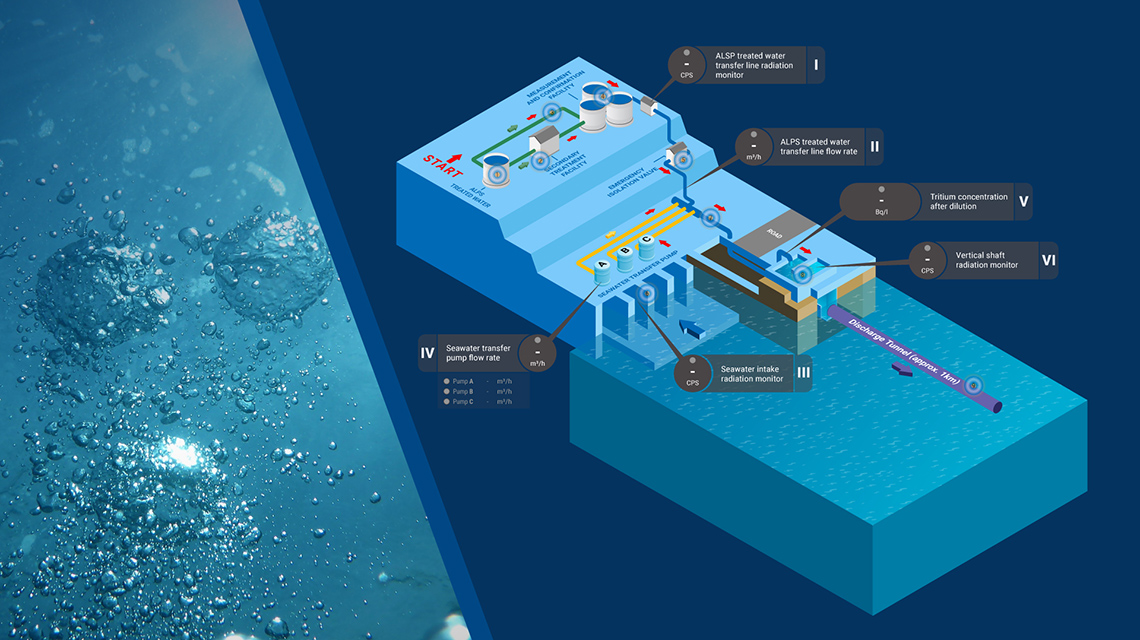The Agency issued its comprehensive report on the safety review of the ALPS-treated water at the FDNPS on 4 July. In the report, the IAEA concluded that Japan’s approach and activities to discharge ALPS-treated water are consistent with relevant international safety standards. The report noted that the controlled, gradual discharges of the treated water to the sea, as currently planned and assessed by TEPCO, would have a negligible radiological impact on people and the environment.
In addition to the live monitoring, the IAEA will continue its safety review during the discharge phase by having a continuous on-site presence, meeting IAEA Director General Grossi’s commitment to be involved before, during and after the water discharges.
The IAEA experts will observe onsite activities related to the ALPS-treated water discharge, including samples and measurements, and will interface with TEPCO and officials from Japan’s Nuclear Regulation Authority (NRA). The IAEA will also organize review missions periodically to observe activities on site and to request updates and additional data from Japanese authorities.
The IAEA’s independent corroboration activities will also continue during the entirety of the discharge, expected to take decades, and will involve IAEA laboratories and third-party laboratories. Over time, the IAEA will display the results of this independent corroboration of source and environmental monitoring, as well as the results of its corroboration of the capabilities of relevant Japanese individual monitoring services for occupational radiation protection. The results are published on the website to enhance the availability of relevant data for interested parties.
“All of these activities will work together to provide a comprehensive picture of the activities taking place at FDNPS related to the ALPS-treated water discharge and whether these activities are consistent with relevant international safety standards,” said Gustavo Caruso, Director and Coordinator for the ALPS Safety Review at the IAEA and Chair of the Task Force. “The data provided by TEPCO, and displayed both by TEPCO and IAEA, is just a single piece of the overall monitoring approach and the IAEA’s ongoing safety review.”

